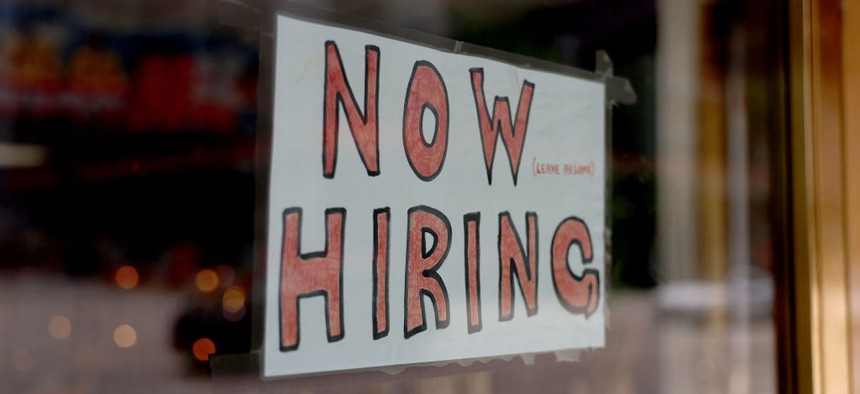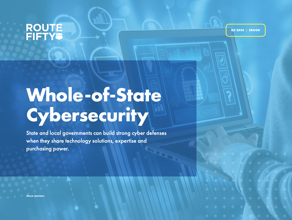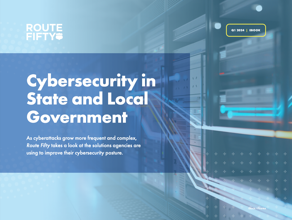Connecting state and local government leaders
Affordable housing, reliable child care and available mental health services could be the key for state and local governments desperate to fill vacant job positions in their communities. Lawmakers are finding ways to meet workers' needs through legislation and funding.
This story is republished from Stateline. Read the original article.
INDIANAPOLIS — For years, Indiana’s GOP-controlled legislature has focused on creating a business-friendly climate by pushing favorable tax rates and regulations, aiming to foster the creation of good-paying jobs across the state.
The way Republican state Sen. Michael Crider sees it, those moves have worked: Companies such as Amazon and Walmart have built new warehouses and fulfillment centers in his district just east of Indianapolis.
But it didn’t take long for him to realize how all those new private-sector jobs could further strain short-handed local governments, particularly school systems, by luring away bus drivers and teachers’ aides.
“That is a general theme in almost every conversation: An able-bodied person that desires to work can find a job just about anywhere in Indiana right now,” said Crider, the Senate majority whip. “And it’s reached the point where I think in some areas, businesses are saying we can’t expand, we would like to expand, we would expand, but we cannot because we don’t have enough workers.”
State legislators from across the country point to the labor shortage as a major concern. While they have been pushing job training and career readiness programs, they increasingly are addressing other factors that can keep people from joining the workforce, such as a lack of child care, affordable housing or mental health services. Some want to attract more immigrants.
The national worker shortage and those indirect solutions came up time and again during the annual summit of the National Conference of State Legislatures, which brought hundreds of lawmakers, policy experts and lobbyists together at the Indiana Convention Center.
I think in some areas, businesses are saying we can’t expand, we would like to expand, we would expand, but we cannot because we don't have enough workers.
– Indiana Republican state Sen. Michael Crider
Crider, for example, said a persistent lack of mental health resources has limited the work potential of some people in his state.
“It not only keeps people out of the workforce, but it also affects people’s attendance and focus on the task at hand when somebody in their family is struggling,” he said. “And so that’s one of the things I think we talked about quite a bit.”
Research from Indiana’s behavioral health commission in 2022 found that mental illness was costing the state more than $4 billion in lost productivity and health care costs each year. The potential to improve worker productivity was one reason the legislature earlier this year near-unanimously approved Crider’s legislation that overhauled the state’s antiquated mental health system and aims to infuse $130 million more per year into services.
Crider said the workforce shortage requires a comprehensive set of solutions. Quality of life is as important as job opportunities—and that is especially true for remote workers who can live anywhere.
Doug Howard, senior vice president of human services at government services provider Maximus, said employers across the country have had to get creative to fill job openings: Some have lured retirees back into the workforce or targeted young people for part-time work.
“The punchline here is that we don’t have enough people,” he told a group of lawmakers at the summit.
Howard cited federal labor data showing there are nearly 10 million unfilled jobs across the country, but just under 6 million people seeking jobs. The nation’s labor force participation rate, which measures the percentage of the civilian population in the workforce, has not returned to its pre-pandemic rate, which even then had steadily been falling for decades. (In July, the national rate was 62.6% compared with 66.2% in July 2003.)
“Those all equal a math problem,” he said.
Those challenges are only exacerbated by state efforts to recruit new employers. A new factory doesn’t just need workers on the assembly line, Howard noted. Contractors need workers to build the plant. Those workers need housing. And both permanent and temporary workers need child care.
States Target Housing and Child Care
While the labor market has been squeezed since the pandemic recovery, experts say things could still get worse.
In Indianapolis, several labor experts said three massive federal spending bills will heighten the need for workers: the Bipartisan Infrastructure Bill, the Inflation Reduction Act and the CHIPS and Science Act. The infrastructure bill alone is expected to spend $1.2 trillion on bridges, ports and mass transit systems.
“That is a lot of money for projects at a time when the U.S. is facing a very tight labor market,” Suzanne Hultin, the director of the National Conference of State Legislatures’ employment, labor and retirement program, said during one panel in Indianapolis.
New Hampshire Democratic state Rep. Brian Sullivan said the impending federal investments weren’t on his radar before the conference — but definitely are now.
“If we can’t fill the jobs we’ve got now and we start building more manufacturing plants and that sort of thing, who’s going to work there?” he said.
The ranking member of the New Hampshire House Labor, Industrial and Rehabilitative Services Committee, Sullivan said he views housing as a major driver of workforce challenges in his state.
He pointed to Dartmouth Hitchcock Medical Center, New Hampshire’s only academic medical center and an employer of more than 8,000 people.
“They are having huge problems being able to attract workers who then can find some place to live,” Sullivan said in an interview with Stateline. “They’re not bad jobs. But the cost of housing is so high that a lot of these people will say, ‘I can’t work here, I’ve got to go live somewhere where I can afford housing.’”
Sullivan said two recently launched bipartisan special committees—one on workforce housing and one on child care—should help tackle labor challenges. He expects legislation soon from those efforts, though the legislature has already added $60 million for child care services.
“I don’t know if it’s the best way,” Sullivan said. “But it’s the way the legislature can contribute. I think employers are going to have to contribute and I think it’s got to be a communitywide effort.”
In Washington state, a lack of child care is a major driver of the labor shortage, said Democratic state Sen. Karen Keiser. While all industries have struggled to hire, she said hospitality and health care employers are especially hard pressed in Washington.
“There are so many workers who cannot work unpredictable schedules because they do not have reliable child care,” she said. “Well, hospitality has unpredictable schedules and so does health care. And those kinds of systemic problems are just running up against each other.”
In 2021, Washington state approved a $1.1 billion plan to make child care and early learning programs more affordable and accessible. This year, the legislature added more than $400 million in new funds to raise child care provider pay and increase subsidies for families over the next two years.
Keiser, president pro tempore of the state Senate, said the ongoing labor shortage does provide workers more leverage, even if it’s a pain for employers.
“And that’s good,” she said, “because they have seen pay stagnation for the last 20 years. … At the same time, we do need to get to work. We need the economy to grow.”
Immigration, Education Efforts
North Dakota Republican state Rep. Karen Karls sees it in the grocery stores.
She used to encounter mostly young people running registers and bagging groceries in the capital city of Bismarck. Now, many of those workers are older adults.
“That’s a little scary,” said Karls, a 17-year veteran of the legislature. “Their work ethic is fabulous, but I just think we need younger workers.”
She said the problem in North Dakota is complex: She blames the pandemic for getting people “used to not working.” For others, it instilled a strong preference for remote work, a challenge for many employers demanding on-site attendance, she said.
North Dakota has more than 20,000 job openings—a huge number for a state of just over 770,000 people. The state has 0.3 unemployed people per job opening, per the federal Bureau of Labor Statistics.
“We’re just not having enough babies,” Karls said.
The state is examining immigration as a potential solution.
In April, Republican Gov. Doug Burgum signed bipartisan legislation creating the Office of Legal Immigration within the state’s Department of Commerce to help businesses recruit and retain foreign labor.
And Brent Sanford, a former GOP lieutenant governor, is leading a pilot program called Uniting for Ukraine. Run by the North Dakota Petroleum Council, the program brings refugees and migrants from Ukraine to work in the state’s Bakken oil fields. Karls said jobs in that remote portion of the state pay very well, but because the oil patch is surrounded by very small towns, housing is a major struggle for workers.
Not all lawmakers agree state government should help private companies.
“I think it’s more of a free market issue,” said Texas Democratic state Rep. Penny Morales Shaw. “Employers have to figure out a way to retain people, they’ve got to figure out a way to attract people.”
In Arkansas, the state government has focused on building up careers in the trades.
Arkansas state Rep. Stephen Meeks, a Republican, pointed to the state’s Be Pro Be Proud campaign. An initiative led by the Associated Industries of Arkansas Foundation, it encourages young people to enter fields such as construction, railroading and manufacturing.
State leaders even hold a Draft Day, pairing graduating seniors enrolled in career and technical education courses with employers ready to hire them.
Meeks said the state has also had a difficult time filling public school teaching positions.
That was part of the motivation behind the state’s LEARNS Act, which passed earlier this year. In addition to a new school voucher program, Republican Gov. Sarah Huckabee Sanders’ signature education bill also raised minimum teacher pay to $50,000 across the state.
Meeks said some Arkansas teachers were making as little as $36,000 per year before that legislation, making it difficult for the state to retain teachers whose degrees could command a higher salary in the private sector.
“I think that’ll definitely help,” he said, “especially in the rural areas of our state.”

NEXT STORY: 127,000 New York workers have been victims of wage theft



